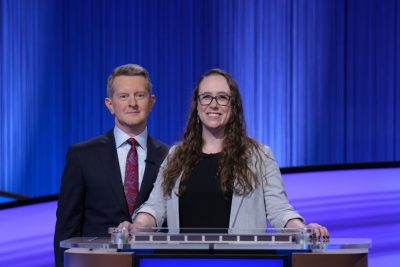A UConn molecular and cell biology assistant professor appeared on the game show on April 1
April 9, 2025 | Mike Enright '88 (CLAS), University Communications

Those were the words of Johnny Gilbert, the famed announcer of Jeopardy!, on April 1 as the UConn molecular and cell biology assistant professor appeared on the game show. Ramsey finished second in her appearance and earned $8790, in addition to a lifetime of memories.
Ramsey, a native of Florida, is in her first year on the UConn faculty and focuses on structural biology, biochemistry and biophysics. She has lived all around the country, earning her undergraduate degree from Florida State, her doctorate from UC-San Diego, and did her post-doctorate work at Johns Hopkins.
UConn Today caught up with Ramsey following her Jeopardy! appearance. See full article in UConn Today
